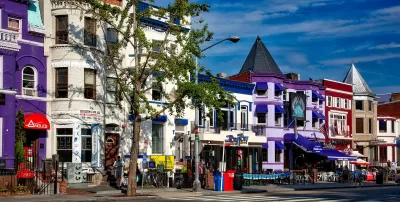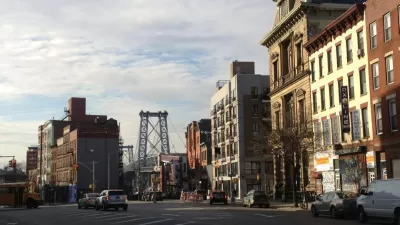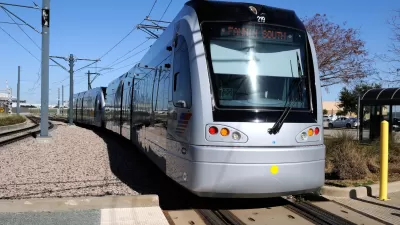Modern zoning practices separated uses, claiming this was a better way to organize American cities. However, the social, cultural, and urban design outcomes drastically changed the world we live in.

A new video from the Institute for Humane Studies at George Washington University takes a closer look at the history of zoning in the United States and the effects zoning has had on the design and makeup of cities.
During the 1920s and 1930s, modernist planners moved to separate land uses in cities. They said it was a solution to nuisance and pollution problems, but it was also a way to promote the single-family home and, by extension, the nuclear family. One of the main effects of single-family zoning was to drive up the cost of housing, as housing densities decreased and supply failed to meet demand, says economist Sandy Ikeda.
Starting in the 1950s, cities started rezoning and designating particular areas as blight. The result was the forcing out of residents in poor and minority neighborhoods. In addition, zoning laws helped perpetuate segregation and discriminatory housing practices.
Zoning also reshaped the ways cities looked, with a focus on designing for the automobile instead of people. Jane Jacobs challenged conventional planning practices, points out Christina Sturdivant Sani:
She bucked at planners’ separation of people from the bustle of commercial districts, where they could gather with friends and get to know strangers. Because of car-centric planning, she said the modernist planners’ designs made streets less safe and discouraged folks from visiting small businesses.
Jacobs advocated for mixed-use zoning that would encourage more vibrant and diverse street life.
Ikeda says Jacobs’ lessons are relevant for planners today. “Be aware of the consequences. Try to take into account the costs of what you’re doing. The true city, where experimentation goes on, where you have face-to-face contact, where you have social capital, cannot be completely planned, so you have to be modest. You can’t make people use something in exactly the way that you wanted it.”
FULL STORY: How 1920s-era zoning laws separated people from what they love about cities

Maui's Vacation Rental Debate Turns Ugly
Verbal attacks, misinformation campaigns and fistfights plague a high-stakes debate to convert thousands of vacation rentals into long-term housing.

Planetizen Federal Action Tracker
A weekly monitor of how Trump’s orders and actions are impacting planners and planning in America.

San Francisco Suspends Traffic Calming Amidst Record Deaths
Citing “a challenging fiscal landscape,” the city will cease the program on the heels of 42 traffic deaths, including 24 pedestrians.

Defunct Pittsburgh Power Plant to Become Residential Tower
A decommissioned steam heat plant will be redeveloped into almost 100 affordable housing units.

Trump Prompts Restructuring of Transportation Research Board in “Unprecedented Overreach”
The TRB has eliminated more than half of its committees including those focused on climate, equity, and cities.

Amtrak Rolls Out New Orleans to Alabama “Mardi Gras” Train
The new service will operate morning and evening departures between Mobile and New Orleans.
Urban Design for Planners 1: Software Tools
This six-course series explores essential urban design concepts using open source software and equips planners with the tools they need to participate fully in the urban design process.
Planning for Universal Design
Learn the tools for implementing Universal Design in planning regulations.
Heyer Gruel & Associates PA
JM Goldson LLC
Custer County Colorado
City of Camden Redevelopment Agency
City of Astoria
Transportation Research & Education Center (TREC) at Portland State University
Jefferson Parish Government
Camden Redevelopment Agency
City of Claremont





























